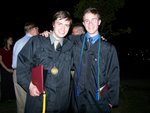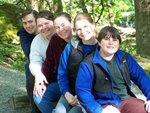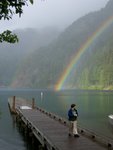The news just couldn’t get much worse. “If the new set of CT scans show that the vascular connection between the tumor and pancreas is extensive,” my Manila oncologist, Dr. Ruby Li, explained, “then we will declare it inoperable and I will just have to send you home."
My surgery was scheduled to start in 4 hours. Days of very uncomfortable recovery would follow. I stared at the IV needle that dug into my hand. “My, my,” I thought, “how quickly things had developed.”
I knew I had a growth that was all but certain to be cancerous. Normal tissue just doesn’t grow that fast. Of course, my last 2 scans were done without the benefit of a contrast dye injected into my veins that highlight blood flow. The dye is rough on the kidneys and I needed to protect the one I had remaining. My Iloilo oncologist, after reading my CT scan report of a possible tumor recurrence, said we must quickly get that growth surgically removed. I agreed.
Sunday night, I flew to Manila and checked myself in at the hospital. Dr. Li visited me on Monday, saying that she was going to start me on Sorafenib, a new drug for advanced kidney cancer that I knew would, at best, slow the inevitable growth of the cancer, buying me maybe another year of life.
“But don’t you want to first see what the biopsy report shows?” I questioned, “Maybe, the tumor margins will be wide and clear; the cancer may not come back.”
“No, no,” she insisted, “it will come back. The Sorafenib will be a preemptive measure to slow it’s return. I will put you on it post-op.”
I finished my breakfast on Tuesday morning. No more food or drink the rest of the day. Nurses, assistants, anesthesiologists, and others flowed through my room, preparing me for my surgery.
Dr. Li came in at 9:00 a.m. “Your scan seems to show the tumor is attached to your pancreas. This means we probably cannot remove all of it, but we will just remove what we can in order to lesson the tumor load. That will help some. Anyway, we will start you on the Sorafenib.”
At 10 a.m., the surgeon entered, holding my CT scan from Iloilo. He explained that he would follow the same incision as my last surgery, a 9 inch lateral cut mid-way up my back. “Educate me,” I asked, “show me where the tumor is on the scan.”
He held the scan to the window, pointing out a shaded area in two of the frames. “This is what we are looking at,” he said, “but I would like to order another scan with contrast, so I can see more precisely where I need to cut.”
I winced. I needed a lot of water to wash out the contrast dye from my kidney, but I couldn’t drink anything because of the upcoming surgery. Well, my prognosis wasn’t looking too good at this point, so I consented. Minutes later, I was wheeled to the scanner, injected with dye, and zapped with more radiation than most Japanese will ever get from their nuclear fallout.
After lunch, which I couldn’t eat, Dr. Li returned one more time, informing me that if the new set of scans show the tumor closely attached to the pancreas, then surgery wouldn’t do much good, and she would just send me home.
So that was it. In 2 days I had gone from having a likely cancerous growth that could be removed, to maybe having inoperable advanced kidney cancer. When would I return to Texas? What arrangements did I need to make for the kids? How about arrangements for me?
I talked to God. I knew I wasn’t supposed to worry. But all this was so sudden. My growing ministry would stop. “Lord, is this really part of your plan?” I knew my faith and trust in the Lord would remain, but these first few days would be kinda shaky.
It was 2 p.m., 4 hours away from the surgeon’s knife, when Dr. Li hurriedly enters. “Well, I’m sending you home.”
My heart sank. “No, don’t tell me that,” I pleaded. I quickly began forming an appeal to please do the surgery, taking out as much of the cancerous tumor as they could.
It took me a few seconds to hear what else she was saying. “The contrast helped…a better machine…2 senior radiologists examined the scans…no growth…no tumor…just a slightly extended part of the pancreas…a normal variant.”
My mind struggled to change gears. I was confused. “You mean, but the growth, the tumor…, is this good news?”
“Of course it’s good news!” she exclaimed, “there is no tumor. You can go home.”
I hugged the ugly old lady, ignoring her poor patient PR.
Four hours later, rather than lying on an operating table, I was sitting in the back seat of an old taxi, soon to be heading to the airport. Yes, I was relieved. What a turn of events! I wasn’t going to have to leave my kids just yet. My ministry here wasn’t over. I just might make it to old age after all. I began receiving text messages that said, “Praise the Lord!” and “God is good!” I appreciated their affection and affirmations.
But as the taxi passed through Metro Manila’s slums and ghettos, I reflected. No matter what the outcome would have been, God is always good and always worthy to be praised. As Jan enjoys the beauty, the riches, and the splendor of heaven, I’ve no doubt that her praises of God’s goodness are so much clearer than mine could ever be on this side of eternity.
Weaving through congested traffic, the taxi crossed a rusty steel bridge that spanned the Pasig, one of the dirtiest rivers in the world, passing endless shanties and shacks where millions of people struggled for survival in grim urban poverty. The black sewage river water was tainted yellow by the setting sun’s rays that struggled to penetrate the thickly polluted air of this third world mega-city.
Well, looks like I’m stuck on this earth for a little while longer.
Subscribe to:
Post Comments (Atom)




































3 comments:
Mark and all the Tribe of Moses, I count this a privilege to lift all of you up before our Father as you share your heart and vision of His ministry He has allowed you to join in! I also ask Him to send more workers into His fields. Because He Lives we face tomorrow with Him!
This is fantastic news. Our God is amazing!
Thank you for sharing and blogging. Yours and Ate Jan's and the kids' hope in the Lord is always such an encouragement.
Post a Comment